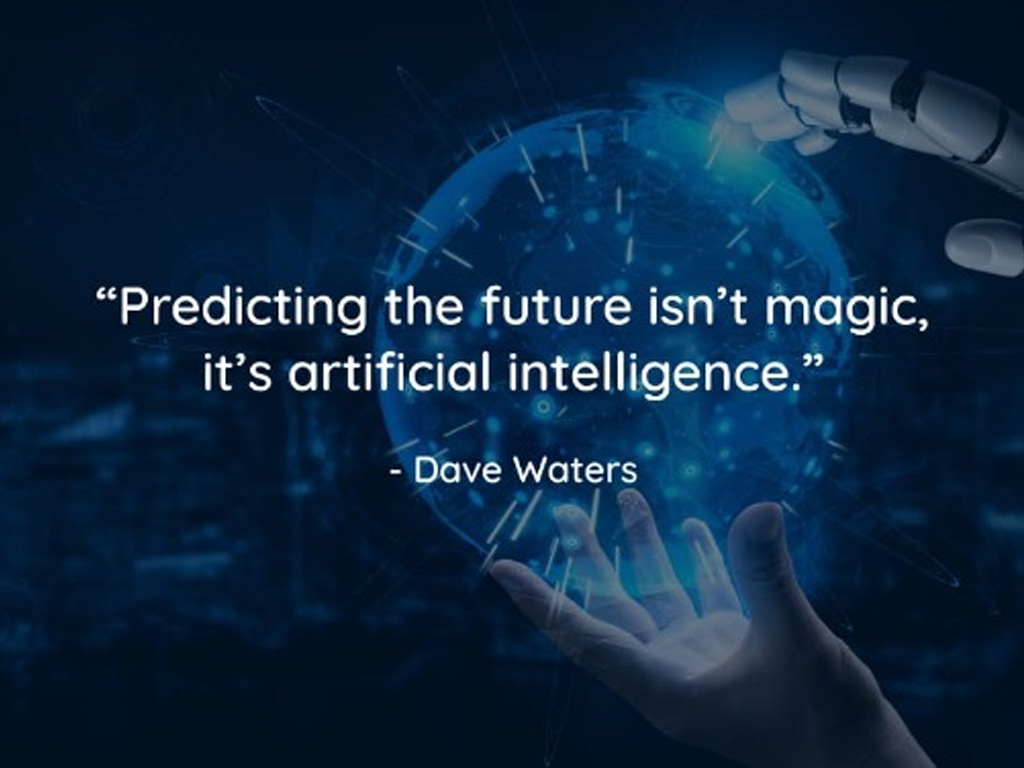Table of Contents
Introduction
In the constantly changing field of technology, AI-powered tools have become indispensable for enhancing productivity and organization. Throughout our journey in 2024, these tools have not only revolutionized the way we work but also how we manage our daily tasks.
AI productivity tools use Machine Learning and Natural Language processing to enhance workflow efficiency and drive digital transformation. These AI assistants anticipate needs and deliver services quickly, which is crucial for enterprise survival in today’s fast-paced world.
As we continue to explore this exciting domain, it’s clear that AI-powered productivity tools are not just a trend but a transformative force reshaping the very fabric of our work and personal lives.
Key Stats
- More than 80% of executives from the retail and consumer industry plan to use AI automation for their businesses.
- Companies using AI technology experience significant increases in productivity by up to 30% and cost reductions of up to 40%.
- By 2024, digital voice assistants powered by AI are expected to surpass the global population.
- AI-powered learning platforms can personalize learning experiences for employees, leading to improved knowledge retention and skill development
Artificial Intelligence-Powered Tools: An Overview
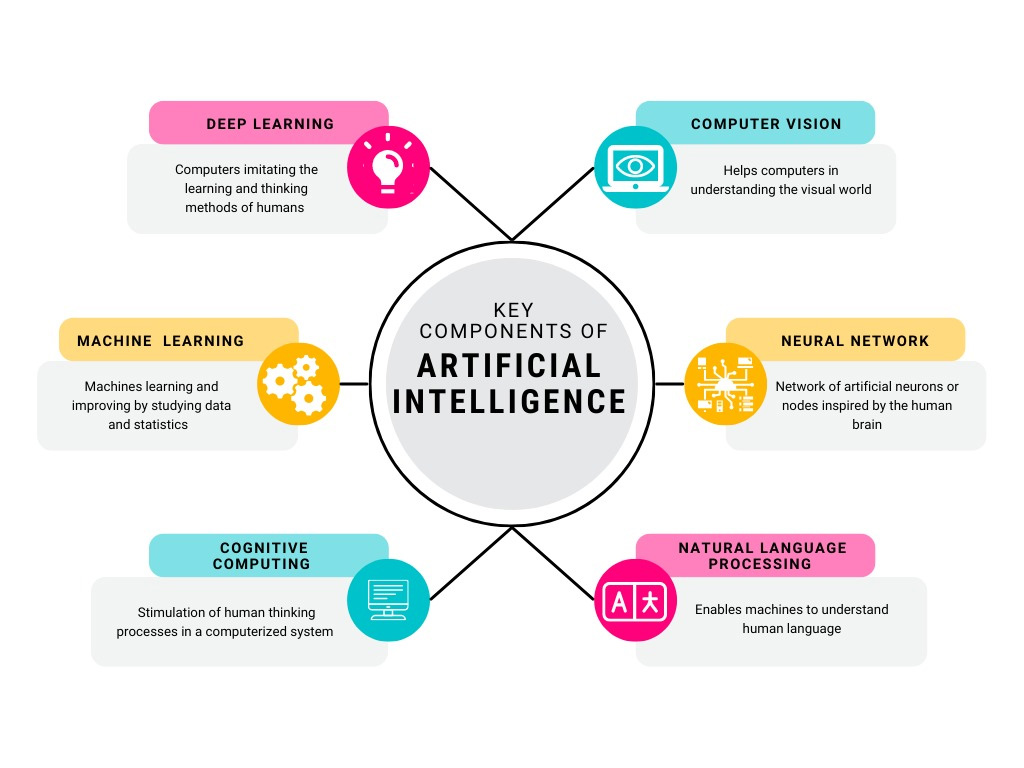
AI-powered tools are software applications that use artificial intelligence technology to perform tasks, make informed decisions, or improve functionality. They are efficient, reliable, and can adapt to new situations. Examples include chatbots and predictive analytics tools.
The key components of AI-powered tools include:
- Machine Learning (ML): Machine learning is a subset of artificial intelligence (AI) that enables systems to learn and improve from experience without being explicitly programmed. It focuses on the development of algorithms that can analyze data, recognize patterns, and make decisions with minimal human intervention.
- Natural Language Processing (NLP): NLP is a technology that enables AI to understand and produce human language, improving interactions. GPT models, created by OpenAI, use a transformer architecture with attention mechanisms, setting a new standard for generating human language.
- Computer Vision: AI tools endowed with computer vision can interpret visual information, pushing forward advancements in various sectors such as autonomous driving, medical diagnostics, and security.
- Automation: The automation capabilities of AI tools are remarkable, streamlining monotonous and repetitive activities. This includes tasks from data processing and analysis to routine decision-making, thereby allowing humans to engage in more imaginative endeavors.
- Predictive Analytics: AI applications excel at dissecting data to foresee trends and predict future outcomes. This is particularly beneficial across different fields, enabling organizations to leverage data for informed decision-making and achieve the best possible results.
- Deep Learning: Deep learning is a complex subset of machine learning, utilizing multi-layered neural networks to model high-level abstractions in data, significantly enhancing AI’s ability to recognize patterns and make decisions.
- Cognitive Computing: Cognitive computing simulates human thought processes in a computerized model, enabling AI to solve complex problems through learning, reasoning, and decision-making.
- Neural Network: Neural networks, inspired by the human brain’s architecture, are a fundamental component of AI, allowing machines to learn from observational data, thereby improving the accuracy and effectiveness of AI applications.
The Ultimate AI Tools
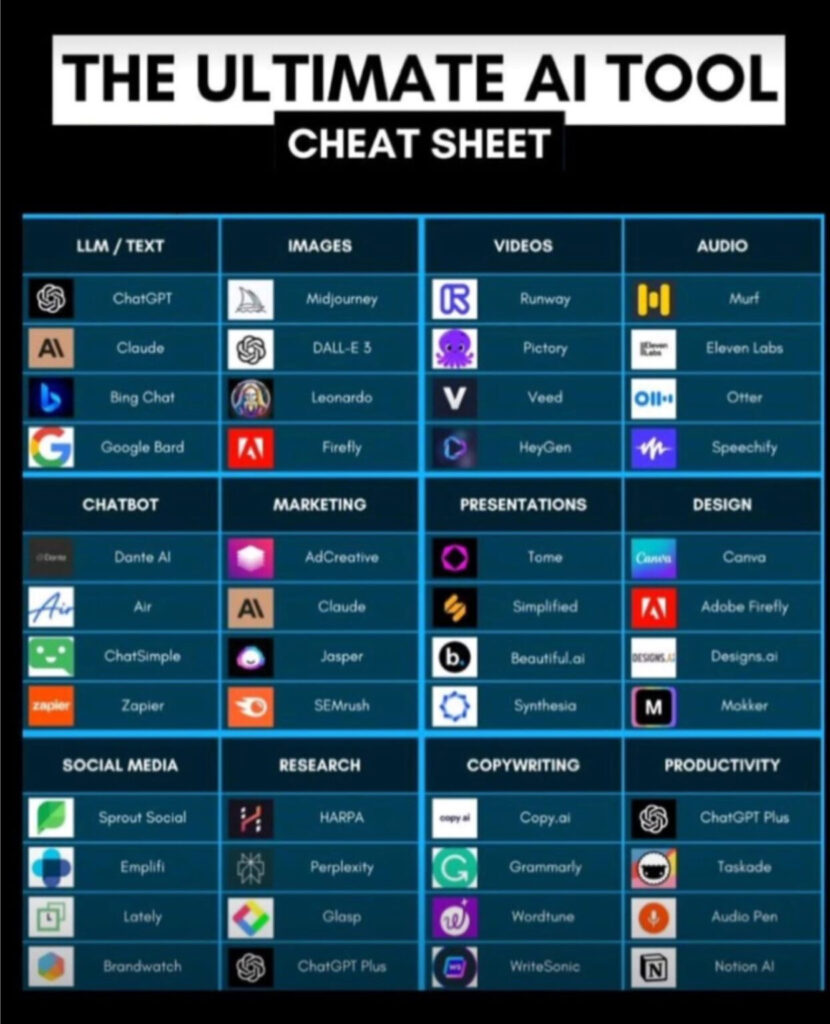
To improve productivity, it is important to focus on deep work, which challenges professionals to their cognitive limits and allows them to produce their best work.
As we navigate through 2024, artificial intelligence continues to shape the landscape of technology, offering groundbreaking tools that redefine efficiency, creativity, and decision-making processes. Among these, GPT (Generative Pre-trained Transformer) has emerged as a cornerstone, alongside a suite of other AI tools that are transforming industries and everyday lives. Here is an exploration of the top AI tools, including GPT, that are making significant impacts this year.
AI Tools For Large Language Model/Text
- OpenAl’s GPT-4: GPT-4 from OpenAI is a powerful tool used for content creation, coding, and even therapeutic simulations. It has a deep understanding of language and can generate human-like text, making it a top choice for developers and creators.
- Midjourney: An independent research lab’s AI that specializes in generating highly creative visual content based on textual descriptions.
- DALL-E 3: The third iteration of OpenAI’s image creation model, capable of generating detailed and nuanced images from textual prompts.
- Leonardo: An AI tool that combines various creative abilities, including drawing, design, and text generation, to inspire user creativity.
AI Tools For Images
- Midjourney: An independent research lab’s AI that specializes in generating highly creative visual content based on textual descriptions.
- DALL-E 3: The third iteration of OpenAI’s image creation model, capable of generating detailed and nuanced images from textual prompts.
- Leonardo: An AI tool that combines various creative abilities, including drawing, design, and text generation, to inspire user creativity.
AI Tools For Videos
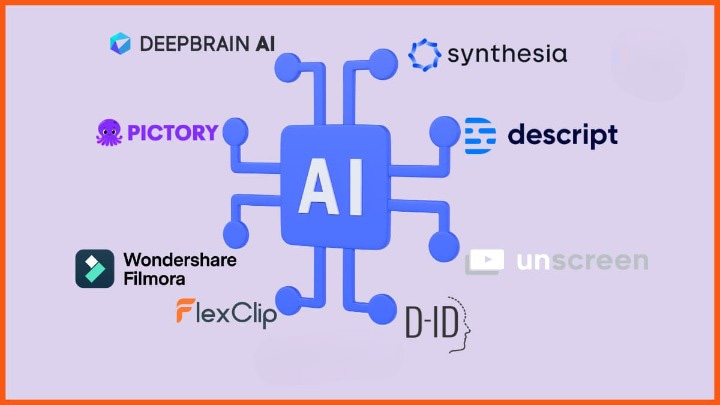
- Wondershare Filmora: Wondershare Filmora is a user-friendly video editing software that offers a wide range of creative tools for video editing and enhancement, making it suitable for both beginners and experienced users.
- Synthesia: Synthesia is an AI-powered platform that creates realistic video avatars and synthetic voices, allowing users to generate video content without the need for camera footage or voice recording.
- Runway: An AI platform that offers creative tools for video editing, machine learning models for content creation, and more.
- Pictory: A video creation and editing tool that uses AI to convert text and articles into engaging video content automatically.
- Veed: A simple, online video editing platform powered by AI, offering tools for adding subtitles, cutting, and enhancing videos.
AI Tools For Audio
- Murf: An AI voiceover platform that allows users to create realistic voiceovers for various purposes using a wide range of voices.
- Eleven Labs: Specializes in AI-driven voice synthesis, offering realistic and customizable voice generation for content creators.
- Otter: An AI-powered transcription service that converts live voice conversations into searchable, shareable written text.
- Speechify: An AI text-to-speech reader that turns any text into spoken word, aiming to improve accessibility and productivity.
AI Tools For Chatbot
- Air: Typically refers to an AI-powered asset management platform that helps teams organize, manage, and collaborate on visual content.
- Zapier: An automation tool that connects your favorite apps, automating repetitive tasks without coding or relying on developers.
AI Tools For Marketing
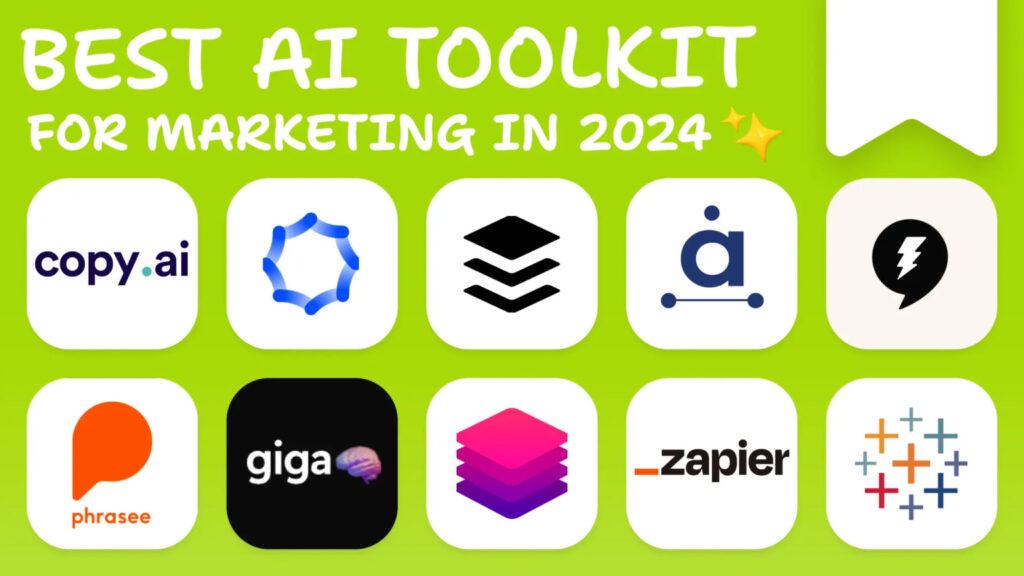
- Phrasee: Phrasee uses AI to optimize marketing language across email, SMS, social media, and push notifications, helping brands improve engagement and conversion rates through language optimization.
- Zapier: Zapier is an automation tool that connects your favorite apps and services with each other without the need for coding, using AI to streamline workflows and automate repetitive tasks across a wide range of applications.
- Copy.ai: Copy.ai is the perfect solution for enterprise marketing teams looking to improve their go-to-market strategy and streamline their content.
- AdCreative: Utilizes AI to automate and optimize the creation of ad content, aiming to improve engagement and conversion rates.
- SEMrush: A comprehensive SEO tool that uses AI to provide insights on keyword research, competitor analysis, and site audits.
AI Tools For Presentation
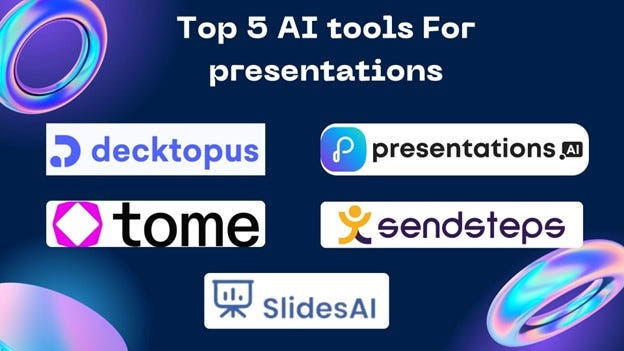
- Decktopus: Decktopus is an AI-driven presentation tool that simplifies the process of creating professional-looking presentations with its intelligent design suggestions and content optimization features.
- Presentations.ai: Presentations.ai leverages AI to provide users with advanced design tools and smart templates, making the creation of visually compelling presentations faster and more intuitive.
- Sendsteps: Sendsteps is an interactive presentation tool that allows audience participation through live polling, quizzes, and Q&A sessions, enhancing engagement through real-time feedback and insights.
- Tome: Offers AI-driven tools to create interactive presentations and documents that dynamically adapt to audience engagement.
- Beautiful.ai: An AI presentation software that automatically designs your slides in real time, making professional visuals accessible to all.
AI Tools For Design
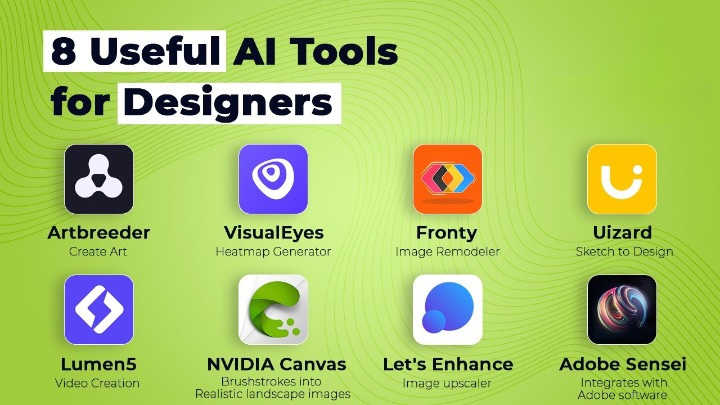
- Uizard: Uizard is an AI-powered design tool that enables users to transform sketches into digital design prototypes quickly, making it particularly useful for app and web development projects.
- Fronty: Fronty is an AI-powered tool that converts images into HTML/CSS code, streamlining the process of creating web pages from visual designs.
- Lumen5: Lumen5 leverages AI to assist users in transforming text content into engaging video content, making it a powerful tool for content marketing and social media.
- Artbreeder: Artbreeder uses generative adversarial networks (GANs) to enable users to merge and manipulate images, creating highly customizable artworks and character designs.
- Adobe Firefly: Adobe’s AI-powered graphic design tool, focused on creative assets and image generation for designers and content creators.
- Designs.ai: An AI-powered design platform that offers tools for video making, logo creation, and graphic design to streamline the creative process.
AI Tools For Social Media Marketing
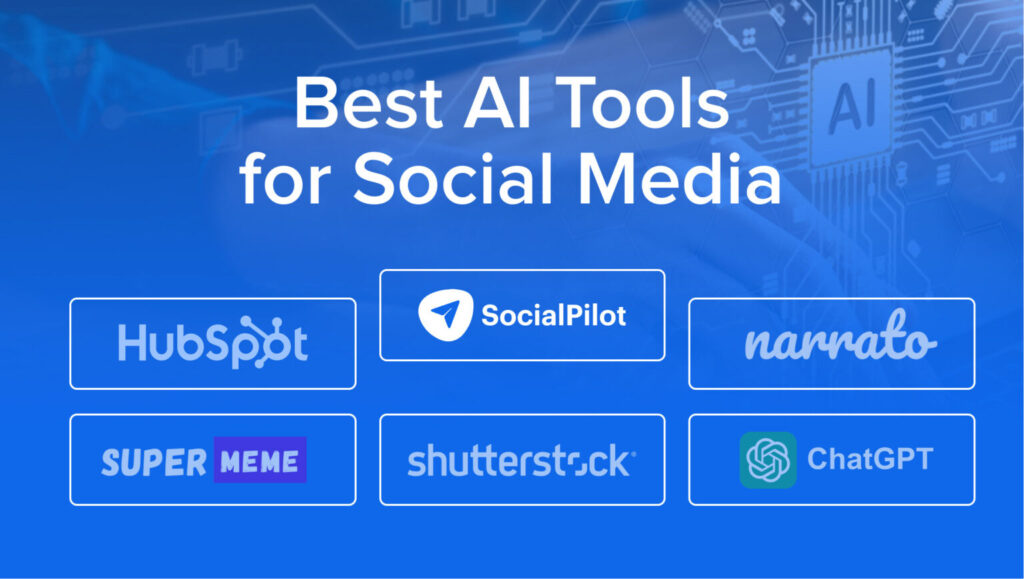
- HubSpot: HubSpot is an all-in-one marketing, sales, and service platform that uses AI to help businesses attract visitors, convert leads, and close customers, offering tools for CRM, email marketing, content management, and analytics.
- Shutterstock: Shutterstock utilizes AI to enhance its vast library of stock images, videos, and music, offering features like advanced search capabilities and content suggestions to help users find the perfect assets for their projects.
- Social Pilot: Social Pilot is a social media management tool that employs AI to help businesses and professionals automate their social media marketing efforts, offering features such as scheduling, analytics, and content curation.
- Sprout Social: A social media management tool that uses AI to analyze social engagement and optimize content strategies for businesses.
- Emplifi: Provides AI-powered social media marketing solutions to help brands amplify engagement and analyze performance across platforms.
AI Tools For Research
- Perplexity: An AI language model or tool designed to offer answers and explanations, aiming to assist with research and information gathering.
- Glasp: A social web annotation tool that uses AI to help users collect, organize, and share knowledge across the web.
AI Tools For Copywriting
- Wordtune: An AI-powered writing companion that helps refine and rephrase sentences, enhancing clarity, tone, and style for more effective communication.
- WriteSonic: An AI content generator designed to assist in creating high-quality articles, blogs, marketing copy, and more, streamlining the content creation process.
AI Tools For Productivity
- Taskade: A collaborative task management platform that incorporates AI to help teams organize projects, tasks, and workflows more efficiently.
- Notion AI: Integrates AI into the Notion workspace, offering features like content generation, summarization, and task automation to boost productivity.
Challenges and Solutions
Organizations can reap many benefits from using AI tools, but they must also be aware of the potential risks. The key challenge is to understand how employees are using these tools and to what extent, while also taking steps to minimize any associated risks.
Technical challenges
- Lack of expertise: Many organizations may need help integrating and managing AI tools due to their lack of data science and technical skills. Such skills are necessary to ensure an organization’s efficient functioning of AI tools.
- Data quality and availability: High-quality data plays a crucial role in AI models. If the data is poor, it can result in biased or inaccurate outcomes. Therefore, it is important to ensure that the data fed into the model is of high quality to improve the reliability of the results.
- Integration with existing systems: Integrating AI tools into existing systems can be difficult and expensive due to compatibility issues, requiring careful planning and execution.
- Scalability and cost: Developing and implementing AI models can be a computationally demanding task, particularly when dealing with significant amounts of data
Human and organizational challenges
- Change resistance: Employees may be hesitant to embrace new technology, fearing job displacement or disruption to workflows.
- Lack of trust and transparency: AI algorithms can be difficult to understand due to their opacity, which makes it challenging for users to comprehend their decisions and potential biases.
- Security and privacy concerns: There are concerns raised regarding data security and privacy breaches when sharing data with AI tools.
- Ethical considerations: Artificial intelligence (AI) models can be biased, which can lead to perpetuating discrimination and unfairness. It is important to address and prevent this bias to ensure fairness and equality in the use of AI.
Solutions for Overcoming these Challenges
- Investing in employee training and education is crucial to equip them with the necessary skills to understand and effectively work with AI tools.
- When selecting AI tools, prioritize those that are user-friendly. Look for tools with intuitive interfaces and simple setup processes to ensure a smooth experience.
- It is important to prioritize data quality and governance by implementing data quality standards, and responsible data collection and sharing.
- It is significant to openly discuss the benefits and risks of AI with employees and stakeholders to communicate effectively and address concerns.
- To ensure that the AI models are understandable and justifiable, it’s important to use transparent AI models and provide clear explanations for the decisions made by them.
- Develop ethical guidelines to ensure fair and unbiased AI implementation.
Future Trends in AI-Powered Productivity Tools
- AI unlocks the Metaverse: AI enhances virtual worlds, making them more immersive and responsive to user interactions. Through advanced algorithms, machine learning, and simulations, AI plays a pivotal role in unlocking the metaverse.
- AI enhances security and surveillance: AI enhances security through intelligent video analytics, facial recognition, and anomaly detection. Its ability to analyze vast amounts of data allows for real-time threat identification, strengthening overall security measures.
- Quantum Computing and AI: The intersection of quantum computing and AI is an area of ongoing research. While quantum computing is still in its early stages, it holds the potential to revolutionize AI algorithms and significantly speed up certain computations, impacting productivity tools.
- Edge AI: The use of AI models on edge devices (like smartphones, IoT devices, and local servers) is expected to rise. This will result in faster data processing and less reliance on extensive data transfer to centralized servers.
- Contextual awareness: AI will understand the broader context of your work, including deadlines, dependencies, and project goals. This will allow tools to prioritize tasks more effectively, automate repetitive processes based on specific situations, and suggest relevant information at the right time.
- Enhanced Automation with Robotic Process Automation (RPA): The usage of AI in conjunction with Robotic Process Automation is expected to increase, resulting in more advanced automation of repetitive duties. This may include complex data entry, document processing, and other rule-based activities.
- Explainable AI (XAI): As artificial intelligence (AI) technology advances, there is a greater need to make AI algorithms more transparent and interpretable. Explainable AI (XAI) seeks to provide users with a clear understanding of how AI systems make decisions, particularly in crucial sectors such as finance and healthcare.
- Democratization of AI: AI-powered tools will become more accessible and affordable, allowing small businesses and individuals to increase productivity and organization. This will democratize AI and accelerate innovation, creating a more equitable landscape.
Conclusion
AI-powered tools offer unparalleled opportunities for organizational efficiency, innovation, and strategic decision-making. Automation of repetitive tasks enhances operational speed and reduces errors.
Personalization and data-driven insights contribute to a more agile and customer-centric approach. Challenges can be mitigated through comprehensive change management and continuous employee training.
The future holds promise with trends like conversational AI, enhanced automation, and explainable AI shaping the evolution of these tools. Successful adoption requires strategic planning, ongoing learning, and thoughtful consideration of ethical implications.
Deepak Wadhwani has over 20 years experience in software/wireless technologies. He has worked with Fortune 500 companies including Intuit, ESRI, Qualcomm, Sprint, Verizon, Vodafone, Nortel, Microsoft and Oracle in over 60 countries. Deepak has worked on Internet marketing projects in San Diego, Los Angeles, Orange Country, Denver, Nashville, Kansas City, New York, San Francisco and Huntsville. Deepak has been a founder of technology Startups for one of the first Cityguides, yellow pages online and web based enterprise solutions. He is an internet marketing and technology expert & co-founder for a San Diego Internet marketing company.

